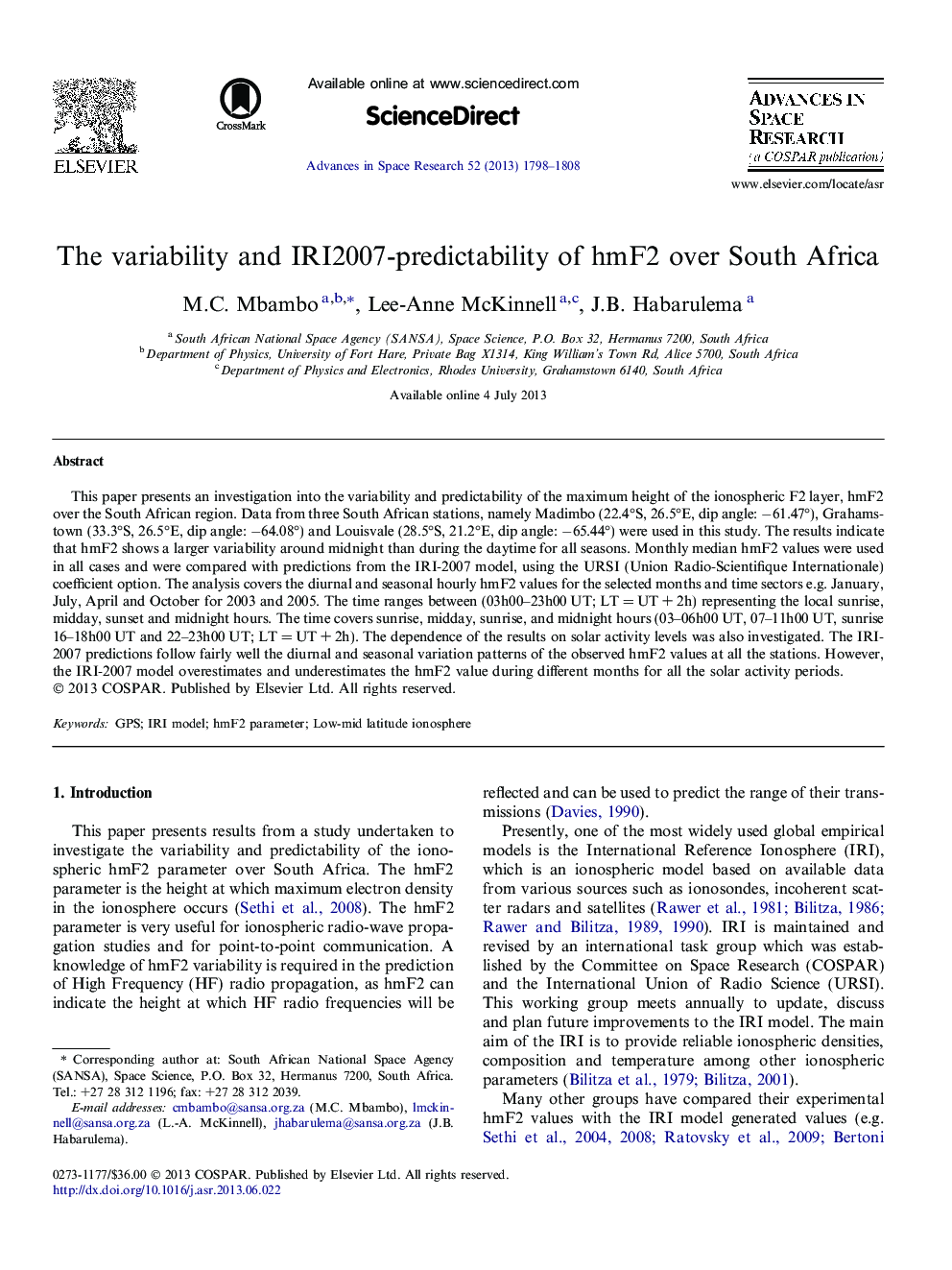| Article ID | Journal | Published Year | Pages | File Type |
|---|---|---|---|---|
| 1764406 | Advances in Space Research | 2013 | 11 Pages |
Abstract
This paper presents an investigation into the variability and predictability of the maximum height of the ionospheric F2 layer, hmF2 over the South African region. Data from three South African stations, namely Madimbo (22.4°S, 26.5°E, dip angle: â61.47°), Grahamstown (33.3°S, 26.5°E, dip angle: â64.08°) and Louisvale (28.5°S, 21.2°E, dip angle: â65.44°) were used in this study. The results indicate that hmF2 shows a larger variability around midnight than during the daytime for all seasons. Monthly median hmF2 values were used in all cases and were compared with predictions from the IRI-2007 model, using the URSI (Union Radio-Scientifique Internationale) coefficient option. The analysis covers the diurnal and seasonal hourly hmF2 values for the selected months and time sectors e.g. January, July, April and October for 2003 and 2005. The time ranges between (03h00-23h00 UT; LT = UT + 2h) representing the local sunrise, midday, sunset and midnight hours. The time covers sunrise, midday, sunrise, and midnight hours (03-06h00 UT, 07-11h00 UT, sunrise 16-18h00 UT and 22-23h00 UT; LT = UT + 2h). The dependence of the results on solar activity levels was also investigated. The IRI-2007 predictions follow fairly well the diurnal and seasonal variation patterns of the observed hmF2 values at all the stations. However, the IRI-2007 model overestimates and underestimates the hmF2 value during different months for all the solar activity periods.
Related Topics
Physical Sciences and Engineering
Earth and Planetary Sciences
Space and Planetary Science
Authors
M.C. Mbambo, Lee-Anne McKinnell, J.B. Habarulema,
